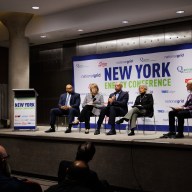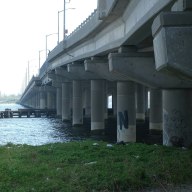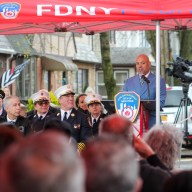By Peter Sorkin
In an Oct. 12 letter to the NYPA, the state Department of Public Health cited an urgent need for at least 315 more megawatts a day of additional generating power in the city to ensure its capacity requirement. But two months ago the NYPA's purchase of the generators from General Electric Packaged Power Inc. irked some local community leaders who said the NYPA did not do enough to notify them of its plans.
But Mike Petralia, a spokesman for the NYPA, said his company is increasing its efforts to work with the community.
“We were in the process before we even announced the sites to reach out to the public officials,” Petralia said.
But Tony Gigantiello of CHOKE, the Coalition Helping Organize a Kleaner Environment, organized in western Queens to keep the community informed of power plant developments, said he was not convinced.
“Why don't they ask us for some feedback? They're a state agency so they don't have consult with the neighborhood? The Public Service Commission is out there, but they don't know what's going on.”
Petralia said the 44-megawatt gas turbines are intended to avert a power supply problem in New York City beginning in June 2001 until the completion of three larger new plants, which are expected to be on line within the next two or three years.
In September, Jack Murphy, a spokesman for the NYPA, said the NYPA decided to buy the turbines for as much as $220 million to ensure that the city would have an adequate supply of power through next summer.
The NYPA also contends it has complied with legislation introduced last month by City Council Speaker Peter Vallone (D-Astoria) to require all energy companies to cut down on carbon dioxide emissions. Murphy said the units will meet emissions levels of 2.5 parts per million of nitrogen oxides compared to emissions of about 9 parts per million of nitrogen oxides for the cleanest existing power plants in the city.
The nine turbines will be placed at five different locations, including four of the five sites which will have two units each. They include:
* 42-30 Vernon Blvd. in Long Island City;
* Hell Gate, on a parcel of land between East 132nd and 134th streets, Locust Avenue and the East River in the Bronx;
* Harlem River rail yards, on a site bounded by East 132nd Street, the New York Connecting Railroad and the Triborough Bridge in the Bronx;
* 23rd Street and Third Avenue in Brooklyn;
* one turbine placed at River Street between North First Street and Grand Avenue in Brooklyn.
Each turbine will produce 44 megawatts, or in the case of two units at a single site, a combined maximum of 79.9 megawatts, NYPA officials said. NYPA's chairman and chief executive officer, C.D. Rappleyea, said the sites were chosen after a complete evaluation of the possible impact on the local environment.
“We're confident that installation of the units at these sites, which were selected after a thorough, fair and objective process, will provide significant benefit to the people of New York City without adverse effects on the environment or the local communities,” said Rappleyea.
Petralia said the NYPA did an environmental assessment but could only place the turbines after meeting some criteria.
“There was some objective requirements,” Petralia said. “First, they had to be able to be near natural gas mains. Second, they had to be quickly hooked into the electric grid, and, thirdly, they needed at least an acre of land for each turbine.”
But many like Gigantiello say the community is already far too oversaturated with power plants to support any more turbines.
“We're going to oppose it obviously,” he said. “We already have enough power plants in the area. We don't think they're really needed.”
The purchase and the placement of the turbines are a result of last year's decision by the state to dismantle the electric-utility monopolies so customers could choose their own energy providers. New York state is now moving from a system in which Con Ed produced and supplied much of the city's electricity to an arrangement under which Con Ed and other utilities buy power from private electrical power generators.
The suppliers will now deliver the energy to New York through their distribution systems.



























